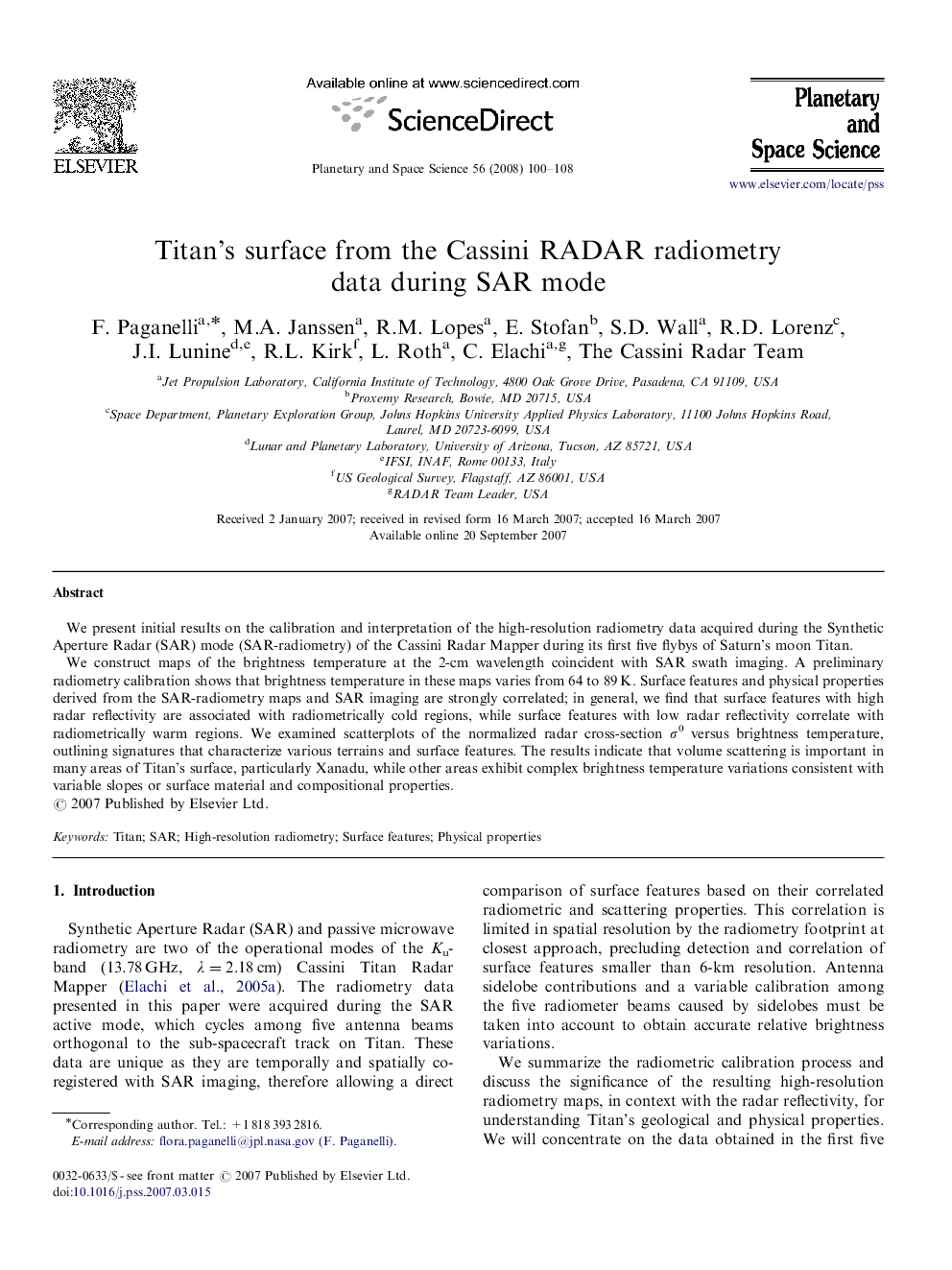| Article ID | Journal | Published Year | Pages | File Type |
|---|---|---|---|---|
| 1782436 | Planetary and Space Science | 2008 | 9 Pages |
We present initial results on the calibration and interpretation of the high-resolution radiometry data acquired during the Synthetic Aperture Radar (SAR) mode (SAR-radiometry) of the Cassini Radar Mapper during its first five flybys of Saturn's moon Titan.We construct maps of the brightness temperature at the 2-cm wavelength coincident with SAR swath imaging. A preliminary radiometry calibration shows that brightness temperature in these maps varies from 64 to 89 K. Surface features and physical properties derived from the SAR-radiometry maps and SAR imaging are strongly correlated; in general, we find that surface features with high radar reflectivity are associated with radiometrically cold regions, while surface features with low radar reflectivity correlate with radiometrically warm regions. We examined scatterplots of the normalized radar cross-section σ0 versus brightness temperature, outlining signatures that characterize various terrains and surface features. The results indicate that volume scattering is important in many areas of Titan's surface, particularly Xanadu, while other areas exhibit complex brightness temperature variations consistent with variable slopes or surface material and compositional properties.
